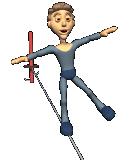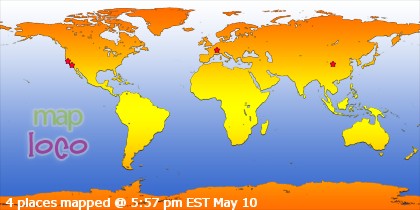




The Chinese circus is a favorite form of art among the Asian people. It has a long history with a distinct national style, evolving from the Chinese peoples' everyday life and working experience. Hence, the evolution to this edition of the IMPERIAL CIRCUS featuring many superstars from China.
The Chinese circus tradition finds its beginnings more than two thousand years ago in the period of the Warring States. Chinese artists, acrobats and contortionists are clearly recognized in ancient artifacts as early as the Qin and Han dynasties (221 B.C. - 220 A.D.). Historical records, ancient relics, relief carvings on tombs, stone and brick, murals in temples and grottoes and decorative patterns on utensils show the modern historian that for centuries audiences have been fascinated by the dazzling performances of Chinese artists, acrobatics and circus.
Although many kinds of acrobatic acts were in existence during the Ch'in Dynasty (255-207 B.C.), it was the Han Dynasty that saw the art form reach new heights and become a popular form of entertainment. Most troupes were formed along family lines and developed skills and routines which, with some alterations, are still performed today. Known as the "Pai Hsi" or the "Hundred Acts", during this period the circus evolved into a lengthy show consisting of a wide variety of tumbling, juggling and magic acts.
Zh`ang Heng, a great man of letters in the Eastern Han Dynasty, recorded in one of his writings, "The Western Capital Fu" many exciting acrobatic acts and magic tricks. They included "Balancing on a High Pole", "Jumping Through Hoops", "Hand Feats" and "Rope Walking" to name a few. Modern Chinese circus, however sophisticated it may appear, was created and performed by the ancient Chinese acrobats.
These acrobats were court favorites throughout the Northern Wei Period (386 - 534), into the Sung Dynasty (960 - 1279), as discovered in Bas relief's, books and paintings from these eras. During the Sung Dynasty, the art of acrobatics was practiced by Taoist metaphysicians in an effort to perfect their physical skill and mental concentration.
As time went on, the audience for Chinese circus changed and performers were well received by the common people rather than the courts. The circus Artists joined puppeteers, storytellers, magicians, dancers and other Artisans already performing across the Chinese countryside. The Chinese government however, became less enchanted with the circus and began to closely regulate the movement of entire troupes and individual Artists. As a result, throughout the 19th and 20th centuries, the Chinese circus existed in a much less structured format. Traveling as individuals rather than troupes for the most part, the performers were demoralized and generally distrusted by the audiences.
In 1949, The Peoples Republic of China began to fund Chinese circus acts.
Troupes then had hopes of revitalizing an ancient and prized art form.
Guided by the principle of "Letting a Hundred Flowers Blossom" and "Weeding Through the Old to Bring Forth the New", Chinese circus has re-emerged as a popular art form. A large number of new programs have been created, collated and transplanted. As musical accompaniment, costumes. props and lighting have improved, Chinese circus has developed into a comprehensive form of stage art, so magnificently illustrated by the featured performers in the IMPERIAL CIRCUS.





Tuesday, August 12, 2008
The IMPERIAL CIRCUS
Labels: .circus., aerialist, china, circus, performers
Subscribe to:
Post Comments (Atom)














0 comments:
Post a Comment